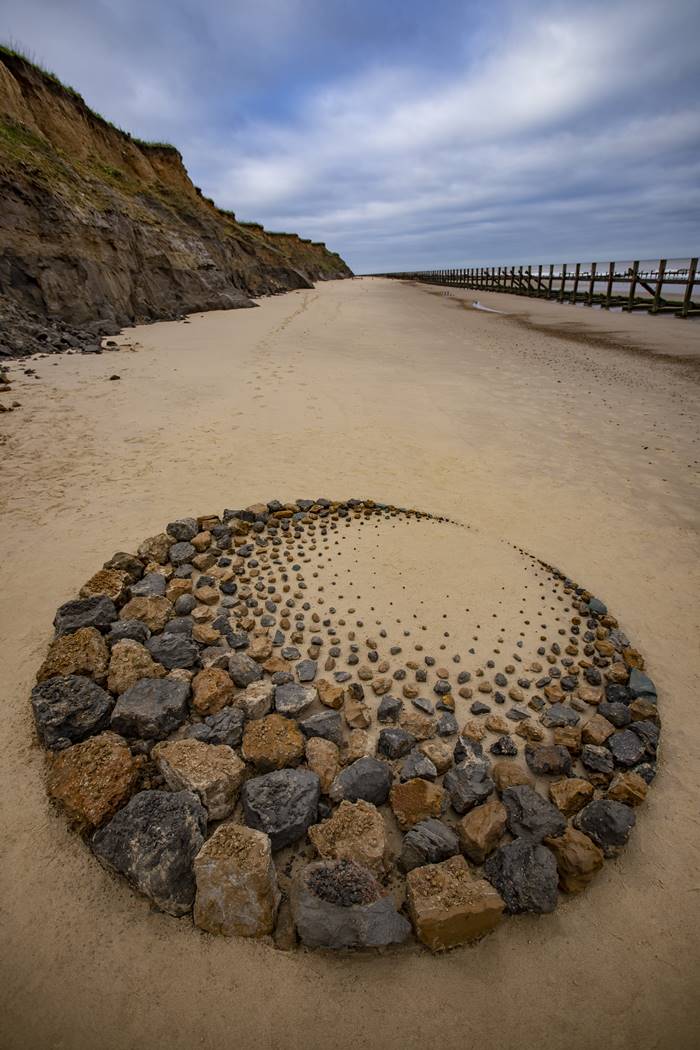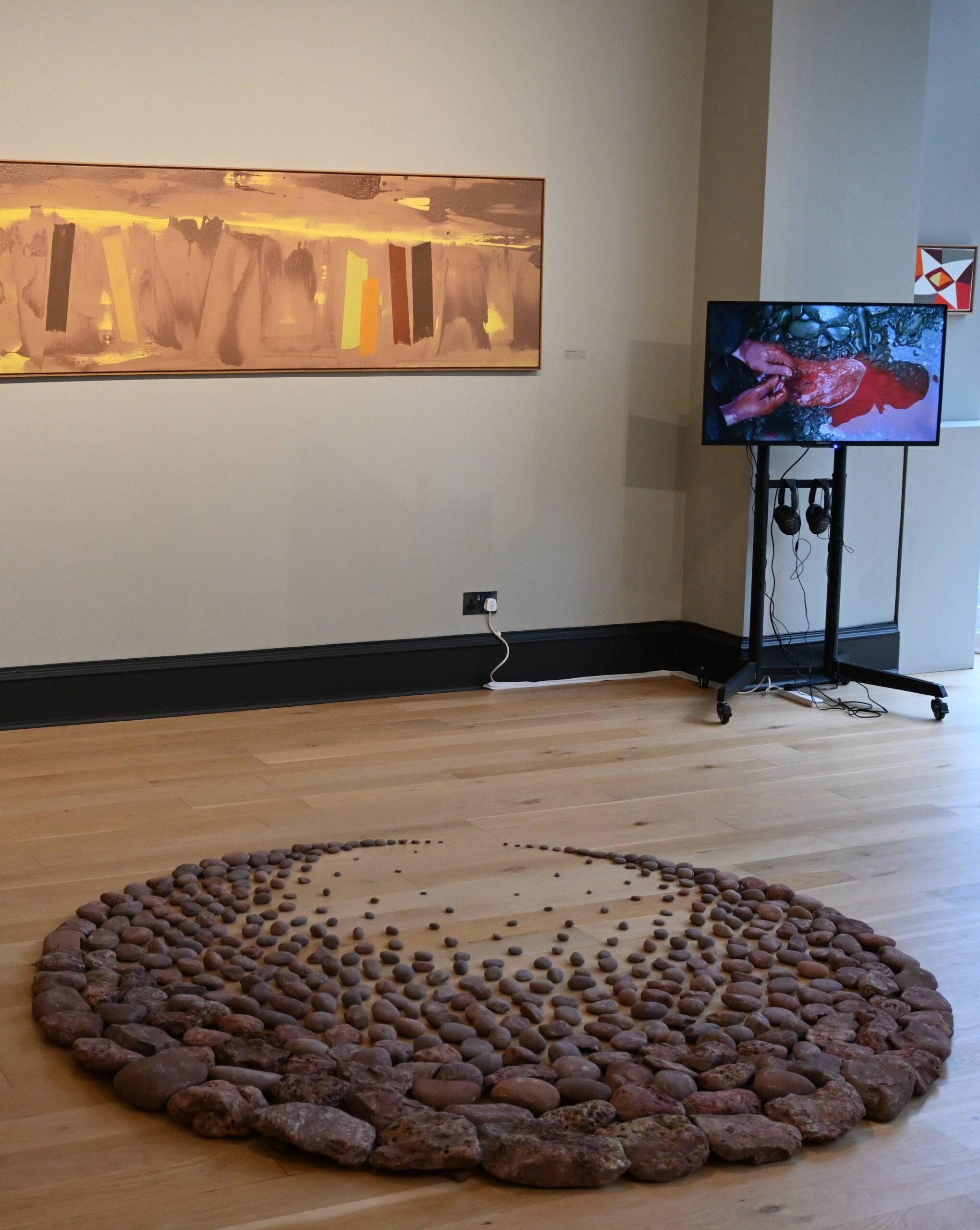Jon Foreman
Stone Moon 2024 & Clay Moon 2023;
Stone Moon, 2024
D. 200cm
£22,000 (includes UK installation by artist)
Made from redstone collected from the foreshore of Freshwater West beach, Stone Moon is the twin work of Clay Moon. While Clay Moon is made from clay, washed from Happisburgh’s eroding cliffs, on Norfolk’s east coast, Stone Moon is created from rocks eroded from Pembrokeshire’s wild west coast, nearly 400 miles away, where the artist is based. Freshwater West beach, like Happisburgh beach, has experienced increased coastal erosion due to sea level rise as a result of climate change. Stones get progressively smaller and smoother to represent the erosion process.
This is the artist’s first permanent work.
Clay Moon, 2024;
Jon’s signature moon crescent land art, made from loose clay sediments, was created on the beach at Happisburgh in Norfolk. The clay sediments which make up the soft layer cake cliffs characteristic of this stretch of coastline, were initially deposited by four historic glaciers. With sea level rise the cliffs are being eaten away at an increased rate. Every cliff fall reveals clues about the species who once lived here but are now extinct.
Clay Moon was erased by the North Sea over a period of several days.
Clay Moon 2024
Signed and numbered.
Printed still from filmed construcction of land art from clay sediemnts on Happisburgh Beach
Edition of 10
£750
Listen to Jon Foreman explaining Stone & Clay Moons:

Clay Moon 2023

Stone Moon 2024
Jon Foreman is a British land artist known for his intricate and ephemeral artworks created from natural materials found in landscapes such as beaches, forests, and grassy fields. Based in Pembrokeshire, Wales, Foreman transforms pebbles, stones, sand, and leaves into mesmerizing patterns and shapes that interact harmoniously with their surroundings. His work, often large in scale and intricate in design, celebrates the beauty of nature and the transient quality of his materials. Through a patient, meditative approach, he arranges natural elements into spirals, concentric circles, and organic forms, resulting in compositions that are striking yet fleeting, washed away or disrupted by the elements soon after completion.
Foreman’s work emphasizes process and impermanence. He spends hours carefully arranging thousands of stones or raking sand to create symmetrical or flowing designs, only for them to be erased by the incoming tide or a gust of wind. This embrace of transience is central to his artistic philosophy; he views his creations as a collaboration with nature, accepting that the natural forces will reclaim his art. This ephemeral aspect lends his work a poetic quality, highlighting nature’s cyclical processes and the beauty of impermanence. By relinquishing control and allowing his pieces to dissolve back into the landscape, Foreman invites viewers to contemplate themes of change, loss, and renewal.
A notable aspect of Foreman’s land art is his skill in arranging stones and other materials by size, color, and texture, creating patterns that appear almost digitally rendered from a distance. His attention to detail and mastery of form make each piece look like a natural extension of the environment, often merging so seamlessly that they seem to arise organically from the landscape. The contrasting colors and textures in his stone and sand formations draw the eye, emphasizing both the uniformity and diversity found in nature.
Foreman’s *Sculpt the World* project has brought him international recognition and a large following on social media, where his fans can view his creations before they are swept away. His work often reflects local features, such as the rugged coastlines of Wales or the sandy beaches where he frequently creates. While his art is often experienced through photographs, those who see it in person gain a sense of peace and wonder, often feeling inspired to connect more deeply with the natural world.
Through his land art, Jon Foreman fosters a unique connection between humans and nature. His creations serve as both a tribute to the natural world and a reminder of its ephemerality, offering viewers a chance to reflect on the fleeting beauty that surrounds them.

